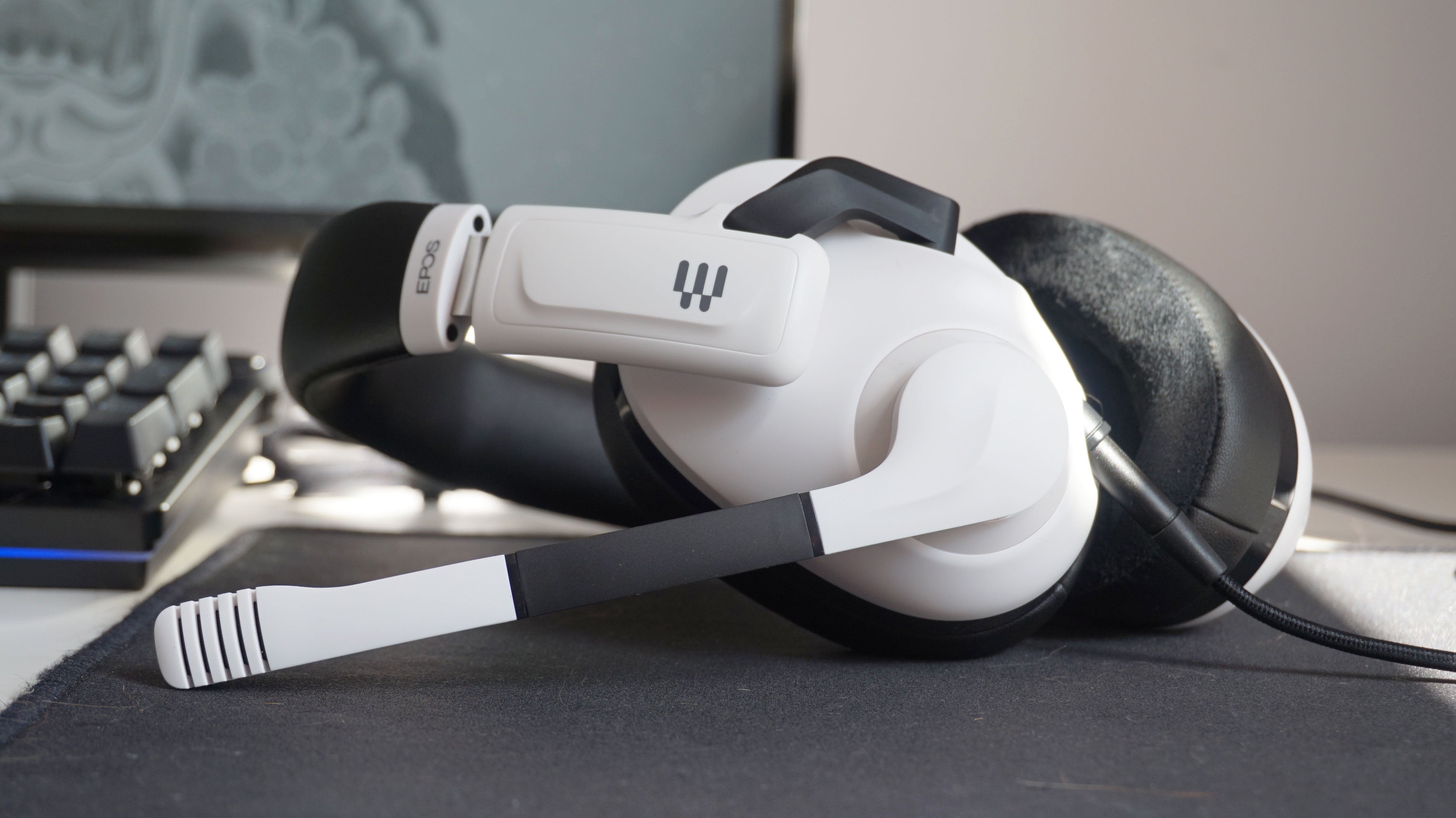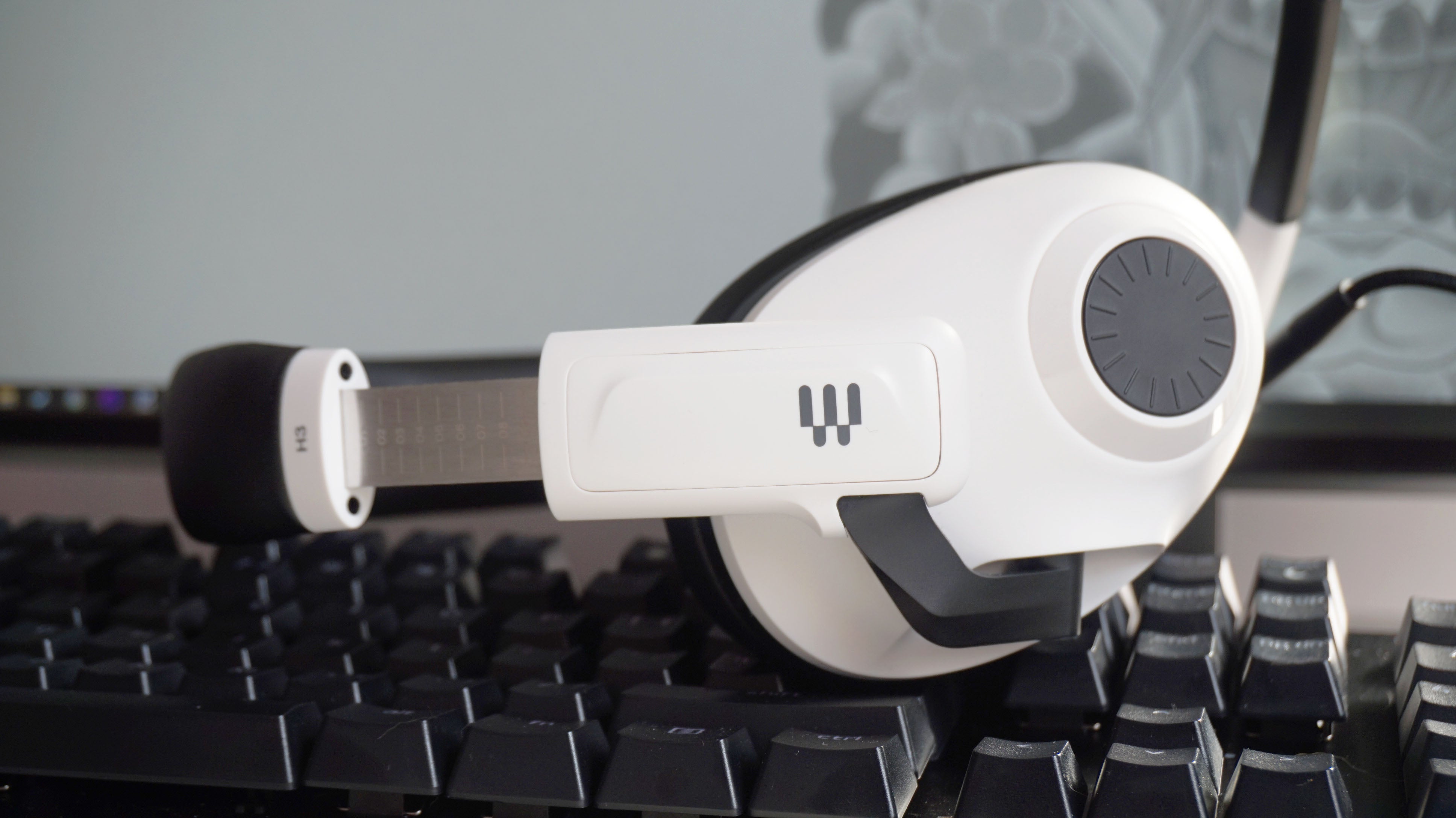The H3 improves on the GSP 350 in a lot of key areas. Its padded, leatherette headband is much more comfortable for starters, and I was able to wear it for a good couple of hours without getting a headache. The GSP 350, on the other hand, felt like it was slowly turning into a medieval torture device, and I often had to start shifting it on my head after just 30 minutes of use. Its design is much classier, too. It’s still a bit on the bulky side, especially with its integrated, flip-down microphone sticking up on the left-hand side, but its all-black (or in the case of my Ghost White review model, white and black) chassis is much less ‘gamery’ than before. Indeed, it actually looks and feels much more like a regular pair of headphones compared to the GSP 350, and it’s probably one of the subtler headset designs I’ve seen recently. There’s still quite a lot of plastic present considering the cost of the thing, though, and I would have expected higher quality materials given its £109 / $119 price. Still, at least it helps keep the weight down (and that dreaded head pinch at bay), which is more important to me than having a slightly fancier-looking headset. Besides, its stainless steel headband slider helps to give it a slightly more premium look, and its tactile, clicky adjustment slots make it easy to get a good fit. That said, I worry about whether there’s enough adjustment at the lower end of the adjustment scale. I’ve got a pretty small head compared to most people out there, I must admit, but even I couldn’t have it set to anything longer than number two on its ten-point adjustment slider. As such, if you know you’ve got a particularly tiny noggin compared to the general public, this might not be the best headset for you. That’s a shame, as the EPOS H3’s audio quality is pretty darn great. It comes with two cables in the box - a single 3.5mm audio jack for consoles, laptops and phones, and a dual 3.5mm cable for us on PC. It doesn’t need any external software to get the best out of it either, and you can just plug in and play and get on with it. The H3 has a wider frequency response than most other gaming headsets out there right now, ranging from 10MHz to 30KHz instead of the usual 20MHz - 20KHz, and the effect of its lower lows and higher highs was immediately apparent when I put it through my audio testing suite. In Doom, my Super Shotgun had a much deeper, guttural roar when I fired it into unsuspecting demon flesh, and the wider soundscape was much richer and more detailed right from the off, from the flickering rumble of burning wreckage to the industrial yawns of UAC machinery. The game’s heavy metal soundtrack also felt like it was properly pumping through my ears, and I felt completely immersed in every single demon scrap. Headsets that go big on bass tend to immediately fall apart when I put them through the next game in my testing suite, Hellblade: Senua’s Sacrifice, but happily the H3 proved to be just as deft here as it was in Doom, taking on its binaural soundtrack with an impressive lightness of touch. The voices inside Senua’s head in the opening cutscene sounded wonderfully natural and full-bodied on the H3, like they were whispering right on the back of my neck, and they felt well balanced against the rumbling, distant thunder and delicate splashes of water from the oar of Senua’s boat. Finally, the H3 was a great fit for the lush orchestral score of Final Fantasy XV, too. The game’s light strings and piano melodies had plenty of depth and detail to them as Noctis and co clambered across the hills of Duscae, and nothing got drowned out or overwhelmed when it came down to the business of fighting, either. Instead, everything felt like it was getting an equal spotlight here, with the zippy, zappy teleportation effects of Noctis’ sword sounding well-matched against the busy battle themes underneath. The H3’s bidirectional microphone also put in a very good performance as well, producing crystal clear voice chat without even the smallest hint of annoying background hiss. It handled my deliberate plosive-heavy sentences quite well, too, blowing out on a couple of occasions but generally keeping everything in check. I also didn’t feel the need to adjust its long boom arm to get good quality audio, either, so you shouldn’t have any trouble using it to chat with your mates online, or using it to take the odd video call. There’s a little bit of flex in the arm should the need arise, but it’s not as bendy as other headset mics out there. To mute it, you just need to flip it back up, although it’s a shame there’s no beep or other indication when it’s been pushed far enough. Still, overall it’s a very commendable microphone that gets the job done. The only real misstep on the H3 is its on-ear volume wheel. This sits completely flush to the headset, which makes it quite difficult to turn when you’re actually wearing it. It’s doable if you’re concentrating, but I kept catching my fingers on the dial’s raised surround, which doesn’t do anything at all. It provides a decent amount of control once you’ve got a good grip on it, but it’s nowhere near as easy and tactile as it could be. On the whole, though, the EPOS H3 is a fine gaming headset indeed. Its audio quality is absolutely top notch, and its wider frequency response helps it stand out from the crowd. However, there’s a lot of stiff competition in the H3’s price range, and when my current best gaming headset pick, the exceptional Logitech G Pro X, can be had for slightly less these days (£100 / $116), the H3 becomes a little harder to justify. It’s the little things - like its next-to-useless volume dial, the extra bulk added by its microphone and the fact it still, eventually, gives me a bit of a headache after a couple of hours - that drag it down. The Logitech also feels a lot more upmarket than the H3, plus it’s even comfier to wear for longer periods of time. It also doesn’t have any fussy on-ear controls, and its Blue Voice-enabled microphone is probably still the best headset mic this side of a proper Blue Yeti. The EPOS H3 won’t disappoint if you do decide to take the plunge, but a slightly more competitive price could have made it something truly special.

